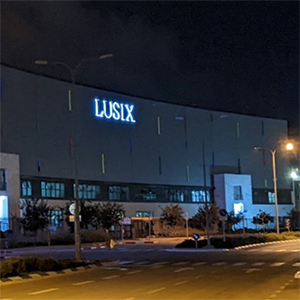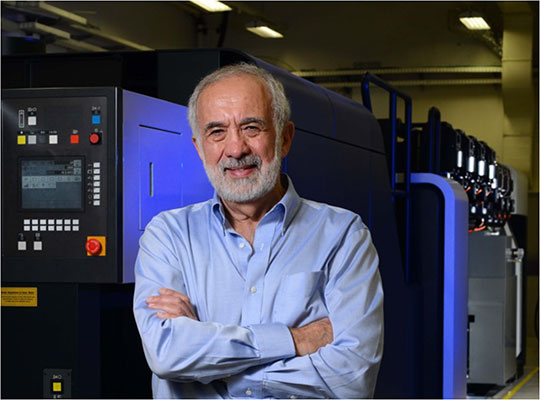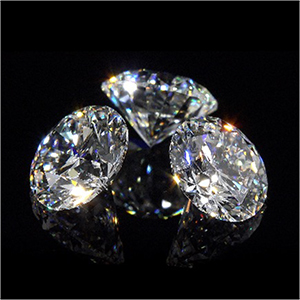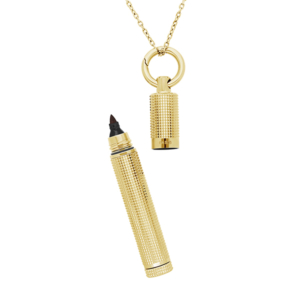
Israeli lab-grown diamond producer Lusix made a splash when it entered the jewelry business in 2022—with a large presence at JCK Las Vegas and the announcement that LVMH Luxury Ventures had contributed to a funding round.
Since then, Lusix has kept a much lower profile. The declines in created diamond prices has spurred the company to focus on higher-end polished stones and possible tech applications, chairman Benny Landa tells JCK.
“I don’t think there’s anybody who wasn’t taken aback by the unbelievably precipitous drop in the pricing of rough lab-grown diamonds,” says Landa, a legendary Israeli tech entrepreneur. “I wouldn’t say the drop caught us by surprise, but the extent of that drop came out of nowhere.… Every quarter, we were expecting it to bottom out and it kept going down.”
He believes the biggest factor driving down the price has been the many Indian companies coming into the market.
“The Indian players made massive investments and deployed thousands of reactors, and they have cheap money and cheap power. Many of them are not just producers of rough but also finished goods and jewelry. So they were able to really swamp the market with low-cost lab-grown diamonds. Their diamonds aren’t the same quality as ours, but when you have such a large volume priced so inexpensively, it has a big impact on the market. Everyone has seen that.”
Landa has been involved in a wide range of tech sectors, but “I’ve never seen, in any business, in any market, in any technology, price declines this steep,” he says. “The good news is that the retail prices have not dropped [as much]. That means that somebody’s making money, and the ones making money are closer to the end customer.”

All this has made Lusix “rethink and recalibrate” its strategy, Landa says. The company’s original plan had three stages: First, to establish itself as a leading producer of lab-grown rough; second, moving downstream to become a provider of premium polished; and the third would be developing high-tech applications for synthetic diamonds.
But the rough business hasn’t been as profitable as anticipated. “In the past, 90% of our carats were sold [as] rough,” says Landa. “We are moving away from that rapidly.”
So now it’s on to stage 2, targeting luxury brands. “Our focus is not to try and compete with the commodity producers,” Landa says. “Luxury brands are looking for provenance they can be proud of, as well as consistency and cutting-edge technology. And that’s where we think we have the biggest advantage.
“We have fabulous colors we grow in controlled shapes. If you’re a producer of luxury goods [and think about] the ways in which you would want to incorporate diamond in your products, you can let your imagination run wild.”
Funder LVMH is an obvious customer for Lusix products; the LVMH-owned watch brand TAG Heuer has already used its gemstones in its Carrera Plasma watch. But Lusix is not limited to LVMH, which, Landa notes, manages its brands separately.

Lusix’s final target is tech. Several lab-grown companies, including the former WD Lab Grown and Diamond Foundry, are now talking more about potential tech applications.
“We are basically a technology company,” says Landa. “We feel that our greatest strength is our technology, and diamond has a fabulous future in high-tech applications.”
The first high-tech direction for diamonds is thermal applications. “Diamond is a very good thermal conductor so it’s a very good heat spreader,” Landa says.
Those applications use diamonds produced with heteroepitaxial growth—which means they have high dislocation density in their crystal lattice. “That’s relatively easy to achieve,” he says.
But to reach the material’s full potential, companies need to consistently produce large wafers, preferably at least four inches in diameter, using homoepitaxial growth—low dislocation density, super-high quality. That has proved far more difficult.
“Once you have that, it opens up the world to you,” Landa says. “I’m not aware of any company that has the capability. But that’s really where we’re focusing.”
Ultimately, he says, diamonds will play a role in everything from quantum computing to medicine (better sensors) to defense (better targeting). They are also the “ideal semiconductor,” he says. But those uses may take a while.
“[Progress] will be measured in years, not months,” says Landa. “I am pretty long in the tooth, and every one of the businesses that I’ve been involved in building has taken over a decade from the time you start doing the R&D until you have a product. We only formally started Lusix seven years ago, and we started the R&D about 11 years ago. It’s more or less on track.”
As far as the gem side, he expects the market will reach a new equilibrium. “A lot of people are running around saying the sky is falling,” Landa says. “In the end, things settle down. There will be calmer waters even for the mined producers—who I think have been extremely alarmed by the fantastic consumer demand for lab grown diamonds. The opportunity may be smaller for them, but it will stabilize, in my opinion. Those who can make it past this crisis and reinvent themselves, I think, are going to do very well.
“We don’t think we’ll continue to see the same chaos,” he adds. “It’s not sustainable on either end.”
(Photo courtesy of Lusix)
- Subscribe to the JCK News Daily
- Subscribe to the JCK Special Report
- Follow JCK on Instagram: @jckmagazine
- Follow JCK on X: @jckmagazine
- Follow JCK on Facebook: @jckmagazine







